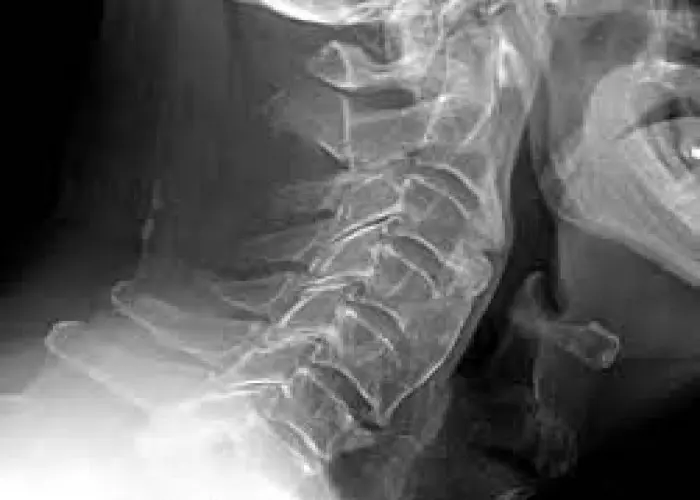 Welcome
Welcome
“May all be happy, may all be healed, may all be at peace and may no one ever suffer."
Migraine with aura

Migraine with aura is a type of migraine that involves a range of neurological symptoms, known as an "aura," that occur before or during the headache. The aura typically lasts for 20 to 60 minutes and may include visual disturbances, sensory changes, or difficulty speaking. In some cases, the aura may occur without a headache, but it is still classified as migraine with aura.
The exact cause of migraines with aura is not fully understood, but it is believed to be related to a complex interplay of genetic, environmental, and lifestyle factors. Triggers that can provoke migraines with aura include stress, lack of sleep, changes in weather or barometric pressure, certain foods or drinks, hormonal changes, and certain medications.
Symptoms of migraines with aura may include visual disturbances, such as flashing lights, zigzag lines, or blind spots, tingling or numbness in the face or hands, difficulty speaking or understanding language, and weakness or difficulty moving. The headache that follows the aura may be severe and may last from a few hours to several days.
Treatment for migraines with aura typically involves a combination of medication and lifestyle changes. Medications may include pain relievers, such as aspirin or ibuprofen, triptans, which specifically target migraines, and preventative medications, such as beta blockers or antidepressants. Lifestyle changes may include getting adequate sleep, managing stress, avoiding trigger foods, and engaging in regular exercise.
Migraines with aura can be a chronic and debilitating condition, but with appropriate treatment and self-care, many people are able to manage their symptoms and prevent future migraines. If you are experiencing symptoms of migraines with aura, it is important to see a healthcare professional for an accurate diagnosis and appropriate treatment.
Research Papers
Disease Signs and Symptoms
- Headaches
- Nausea or vomiting
- Sensitivity to light or sound
- Blurred vision of eye
- Flashes of light in one or both eyes (photopsia)
- Muscle weakness
- Zigzag lines that gradually float across field of vision
- Migraine
Disease Causes
Migraine with aura
There is evidence that the migraine aura is due to an electrical or chemical wave that moves across the brain. The part of the brain where the electrical or chemical wave spreads determines the type of symptoms you might experience.
This electrical or chemical wave can occur in areas that process sensory signals, speech centers or centers that control movement. The most common type of aura is visual aura, which occurs when a wave of electrical activity spreads through the visual cortex and causes visual symptoms.
The electrical and chemical waves can occur with normal functioning of the nerves and do not cause harm to the brain.
Many of the same factors that trigger migraine can also trigger migraine with aura, including stress, bright lights, some foods and medications, too much or too little sleep, and menstruation.
Disease Prevents
Disease Treatments
For migraine with aura, just as with migraine alone, treatment is aimed at relieving migraine pain.
Medications for relief
Medications used to relieve migraine pain work best when taken at the first sign of an oncoming migraine — as soon as signs and symptoms of a migraine aura begin. Depending on how severe your migraine pain is, types of medications that can be used to treat it include:
- Pain relievers. These over-the-counter or prescription pain relievers include aspirin or ibuprofen (Advil, Motrin IB, others). When taken too frequently, these might cause medication-overuse headaches, and possibly ulcers and bleeding in the gastrointestinal tract.
- Migraine relief medications that combine caffeine, aspirin and acetaminophen (Excedrin Migraine) may be helpful, but usually only against mild migraine pain.
- Triptans. Prescription drugs such as sumatriptan (Imitrex, Tosymra) and rizatriptan (Maxalt, Maxalt-MLT) are used to treat migraine because they block pain pathways in the brain. Taken as pills, shots or nasal sprays, they can relieve many symptoms of migraine. They might not be safe for those at risk of a stroke or heart attack.
- Dihydroergotamine (D.H.E. 45, Migranal). Available as a nasal spray or injection, this drug is most effective when taken shortly after the start of migraine symptoms for migraines that tend to last longer than 24 hours. Side effects can include worsening of migraine-related vomiting and nausea.
- People with coronary artery disease, high blood pressure, or kidney or liver disease should avoid dihydroergotamine.
- Lasmiditan (Reyvow). This newer oral tablet is approved for the treatment of migraine with or without aura. In drug trials, lasmiditan significantly improved headache pain. Lasmiditan can have a sedative effect and cause dizziness, so people taking it are advised not to drive or operate machinery for at least eight hours.
- Calcitonin gene-related peptide (CGRP) antagonists. Ubrogepant (Ubrelvy) and rimegepant (Nurtec ODT) are oral CGRP antagonists recently approved for the treatment of acute migraine with or without aura in adults. In drug trials, drugs from this class were more effective than placebo in relieving pain and other migraine symptoms such as nausea and sensitivity to light and sound two hours after taking it.
- Common side effects include dry mouth, nausea and excessive sleepiness. Ubrogepant and rimegepant should not be taken with strong CYP3A4 inhibitor drugs.
- Opioid medications. For people who can't take other migraine medications, narcotic opioid medications might help. Because they can be highly addictive, these are usually used only if no other treatments are effective.
- Anti-nausea drugs. These can help if your migraine with aura is accompanied by nausea and vomiting. Anti-nausea drugs include chlorpromazine, metoclopramide (Reglan) or prochlorperazine (Compro). These are usually taken with pain medications.
Some of these medications are not safe to take during pregnancy. If you're pregnant or trying to get pregnant, don't use any of these medications without first talking with your doctor.
Preventive medications
Medications can help prevent frequent migraines, with or without aura. Your doctor might recommend preventive medications if you have frequent, long-lasting or severe headaches that don't respond well to treatment.
Preventive medication is aimed at reducing how often you get a migraine headache with or without aura, how severe the attacks are, and how long they last. Options include:
- Blood pressure-lowering medications. These include beta blockers such as propranolol (Inderal, InnoPran XL, others) and metoprolol tartrate (Lopressor). Calcium channel blockers such as verapamil (Verelan) can be helpful in preventing migraines with aura.
- Antidepressants. A tricyclic antidepressant (amitriptyline) can prevent migraines. Because of the side effects of amitriptyline, such as sleepiness, other antidepressants might be prescribed instead.
- Anti-seizure drugs. Valproate and topiramate (Topamax, Qudexy XR, others) might help if you have less frequent migraines, but can cause side effects such as dizziness, weight changes, nausea and more. These medications are not recommended for pregnant women or women trying to get pregnant.
- Botox injections. Injections of onabotulinumtoxinA (Botox) about every 12 weeks help prevent migraines in some adults.
- CGRP monoclonal antibodies. Erenumab-aooe (Aimovig), fremanezumab-vfrm (Ajovy), galcanezumab-gnlm (Emgality), and eptinezumab-jjmr (Vyepti) are newer drugs approved by the Food and Drug Administration to treat migraines. They're given monthly or quarterly by injection. The most common side effect is a reaction at the injection site.
Ask your doctor if these medications are right for you. Some of these medications are not safe to take during pregnancy. If you're pregnant or trying to get pregnant, don't use any of these medications without first talking with your doctor.
Stress management and lifestyle
When symptoms of migraine with aura start, try heading to a quiet, darkened room. Close your eyes and rest or take a nap. Place a cool cloth or an ice pack wrapped in a towel or cloth on your forehead.
Other practices that might soothe migraine with aura pain include:
- Relaxation techniques. Biofeedback and other forms of relaxation training teach you ways to deal with stressful situations, which might help reduce the number of migraines you have.
- Develop a sleeping and eating routine. Don't sleep too much or too little. Set and follow a consistent sleep and wake schedule daily. Try to eat meals at the same time every day.
- Drink plenty of fluids. Staying hydrated, particularly with water, might help.
Disease Diagnoses
Disease Allopathic Generics
-
Pizotifen
Medicines containing pizotifen are used in vascular headache or migraine, classical migraine, common migraine and cluster headache.
Initially 0.5 daily and then 0.5 3 times a day or later.
-
Prochlorperazine Maleate
1/2 pill with sudden attack then 1 pill 3 times a day.
-
Metoclopramide Hydrochloride
1 pill 3 times a day 5 minutes before meals.
-
Cinnarizine
1 pill 3 times a day for 15 days for migraine or migraine headache.
-
Propranolol Hydrochloride
The initial dose is 10 mg 3/4 times a day and after 2 weeks the dose can be increased to 20 mg 2/3 times a day and up to 40 mg at night.
-
Amitriptyline Hydrochloride
If the patient has depression or if the patient has a recurrence of the pain, Amitriptyline is prescribed. 25mg to 100mg at night.
-
Flupentixol
1 pill in the morning and 1 pill at night.
-
Vitamin B complex
For weakness of the patient.
1 2 times a day after meals.
Disease Ayurvedic Generics
Disease Homeopathic Generics
Disease yoga
Migraine with aura and Learn More about Diseases

Diffuse idiopathic skeletal hyperostosis (DISH)

Liver disease

Nightmare disorder

Obsessive-compulsive disorder (OCD)

Impetigo

Pneumonia

Patent foramen ovale

Wrist pain
Migraine with aura, মাইগ্রেন উইথ অরা, আভা সহ মাইগ্রেন
To be happy, beautiful, healthy, wealthy, hale and long-lived stay with DM3S.
